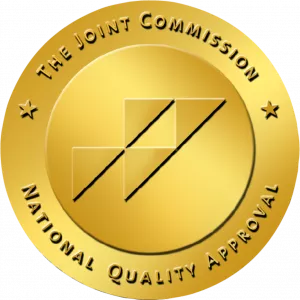Tramadol and oxycodone are both opioid medications used for pain relief. In this article we will discuss the differences and similarities between tramadol and oxycodone, how they work, which is stronger, and risks and precautions for tramadol and oxycodone.
Tramadol and Its Side Effects
Tramadol is a synthetic opioid analgesic used to treat moderate to moderately severe pain. It is often prescribed to manage pain that cannot be eased by non-opioid analgesics. Tramadol works by binding to opioid receptors in the brain and spinal cord, inhibiting (stopping) the transmission of pain signals. It is a Schedule IV drug, which means that it can be used as medicine and has a small likelihood of being abused if used as prescribed.
Additionally, tramadol has serotonin and norepinephrine reuptake inhibitory effects, similar to some antidepressant medications. This dual mechanism of action contributes to its pain-relieving properties.
Some side effects of tramadol include:
- Dizziness
- Nausea
- Constipation
- Dependence
- Addiction
Since tramadol has the potential to be addictive, it should be used under the supervision of a healthcare professional, and the prescribed dosage should be followed carefully. Individuals with a history of substance abuse or certain medical conditions should exercise caution when using tramadol.
Oxycodone and Its Side Effects
Oxycodone is a strong opioid analgesic (painkiller) medication used to manage moderate to severe pain. It is derived from thebaine, an alkaloid found in the opium poppy plant. Oxycodone is classified as a Schedule II controlled substance in the United States due to its high potential for abuse and the risk of dependence and addiction.
Oxycodone works by binding to opioid receptors in the brain and spinal cord, altering the perception of pain and providing pain relief. It is available in various formulations, including immediate-release and extended-release versions. The immediate-release formulations are typically used for short-term pain relief, while extended-release formulations are designed for around-the-clock pain management.
Common brand names for oxycodone-containing medications include OxyContin (long-release) and Percocet (a combination of oxycodone and acetaminophen). Due to its potential for misuse, healthcare providers carefully evaluate the necessity and appropriate dosage of oxycodone for each patient.
Side effects of oxycodone include:
- Drowsiness
- Constipation
- Nausea and vomiting
- Dizziness
- Itching
- Breathing difficulty
- Euphoria
- Sweating
If you or a loved one suffer from tramadol or oxycodone abuse, reach out to us at Avenues Recovery so we can guide you on your path to recovery.
Is Tramadol Stronger than Oxycodone?
The strength of pain medications like tramadol and oxycodone can be challenging to compare directly because individual responses to these drugs can vary. However, in general, oxycodone is considered to be stronger than tramadol.
The choice between tramadol and oxycodone should depend on various factors, including the severity of pain, the individual's response to the medication, and any underlying health conditions. Both medications come with potential side effects and risks, and a healthcare professional should carefully monitor their use.
Can You Take Tramadol and Oxycodone Together?
Since tramadol and oxycodone are both central nervous system depressants, taking oxycodone with tramadol can lead to an overdose as a result of a slowed pulse and respiration.
Taking oxycodone with tramadol can lead to side effects such as:
- Breathing difficulties
- Unresponsiveness
- Impaired motor coordination
- Difficulty with decision making
- Difficulty concentrating
- Dizziness
- Confusion
- Euphoria
- Extreme sedation and drowsiness
- Death
- Coma
Oxycodone vs Tramadol: The Differences
|
Tramadol |
Oxycodone |
|
Given for moderate to moderately severe pain |
Given for moderate to severe pain |
|
Synthetic opioid |
Semi-synthetic (derived from alkaloid thebaine found in the opioid poppy) |
|
Schedule IV drug |
Schedule II drug |
|
Two actions (opioid receptor binding and inhibition of serotonin and norepinephrine reuptake) |
Single action of binding to opioid receptors |
|
Higher risk of serotonin syndrome |
Lower risk of serotonin syndrome |
How Are Tramadol and Oxycodone Similar?
The following are some of the key similarities between oxycodone and tramadol:
- Both oxycodone and tramadol are successful as pain relievers, although oxycodone is much stronger.
- Both belong to the class of medication known as opioid analgesics, which means they bind to opioid receptors in the brain and spinal cord to relieve pain.
- Both are controlled substances.
- Both share common side effects of: constipation, nausea, dizziness and drowsiness.
- Both can lead to physical dependence and stopping them quickly can cause withdrawal symptoms.
What Are Some Tramadol Warnings and Risks?
Some warnings and risks of tramadol include:
- Addiction and Dependence:
Tramadol has the potential for abuse and can lead to physical and psychological dependence. It should be used with caution, especially in individuals with a history of substance abuse or addiction. - Seizures:
Taking tramadol may increase the risk for seizures. This risk is higher in individuals with a history of seizures, head trauma, metabolic disorders, or those taking certain medications that make one prone to seizures. - Serotonin Syndrome:
Tramadol increases serotonin levels, and when combined with other medications that affect serotonin (such as certain antidepressants), it can lead to serotonin syndrome. Symptoms of serotonin syndrome include confusion, hallucination, seizure, extreme changes in blood pressure, increased heart rate, fever, excessive sweating, shivering or shaking, blurred vision, muscle spasm or stiffness, tremor, incoordination, stomach cramp, nausea, vomiting, and diarrhea. - Respiratory Depression:
Tramadol, like other opioids, can cause respiratory depression (slowed breathing), particularly when taken in high doses or in combination with other respiratory depressants, such as alcohol or benzodiazepines. This effect is more likely in elderly or debilitated patients. - Interactions with Other Medications:
Tramadol may interact with other medications, including certain antidepressants, antipsychotics, and other opioids, leading to potentially dangerous reactions. Always inform your healthcare provider about all the medications you are taking. - Hypotension (Low Blood Pressure):
Tramadol can cause a drop in blood pressure, leading to dizziness or fainting, particularly when standing up from a sitting or lying position. - Allergic Reactions:
Some individuals may be allergic to tramadol. Allergic reactions can range from mild skin rashes to severe reactions, including anaphylaxis. - Pregnancy and Breastfeeding:
Tramadol should be used with caution in pregnant or breastfeeding women, as it may pass into breast milk and cause harm to a nursing infant.
What Are Some Warnings and Risks of Oxycodone?
Some warnings and risks of oxycodone include:
Addiction and Dependence:
Oxycodone has a high potential for abuse, addiction, and physical dependence. Prolonged use or misuse can lead to tolerance, where higher doses are needed for the same pain relief, and dependence, where abrupt discontinuation can result in withdrawal symptoms.
Respiratory Depression:
Opioids, including oxycodone, can cause respiratory depression, which is a slowing of breathing. This effect can be dangerous, especially at higher doses, in individuals with respiratory conditions, or when combined with other central nervous system depressants such as alcohol or benzodiazepines.
Accidental Overdose:
Accidental overdose is a significant risk, especially when individuals take more than the prescribed dose or when combining oxycodone with other medications that affect the central nervous system.
Interactions with Other Medications:
Oxycodone can interact with other medications, including certain antidepressants, antipsychotics, and other central nervous system depressants. These interactions can amplify the sedative effects and increase the risk of respiratory depression.
Sedation and Dizziness:
Oxycodone can cause drowsiness, dizziness, and impair cognitive and motor skills. Individuals taking oxycodone should avoid activities that require mental alertness, such as driving or operating heavy machinery.
Gastrointestinal Effects:
Oxycodone can cause constipation, which can be severe and may require additional medications to manage. Other gastrointestinal side effects may include nausea and vomiting.
Serotonin Syndrome:
Oxycodone can contribute to serotonin syndrome when combined with other medications that affect serotonin levels.
Low Blood Pressure:
Oxycodone may cause a drop in blood pressure, leading to dizziness or fainting, particularly when standing up from a sitting or lying position.
Pregnancy and Breastfeeding:
Oxycodone use during pregnancy may have risks, and it can pass into breast milk, potentially causing harm to a nursing infant. Pregnant or breastfeeding women should discuss the risks and benefits with their healthcare provider.
Treatment For Tramadol or Oxycodone Addiction
If you or a loved one is struggling with a tramadol or oxycodone addiction, reach out to us at Avenues Recovery so we can guide you on your path to recovery. We provide comprehensive treatment programs, personalized to your individual needs, to ensure deep and lasting recovery. Our professional and caring staff are experts in the field of addiction, and will stop at nothing to give you the help you need. No one is beyond help, and at Avenues we will show you just how attainable recovery is. We have helped thousands of people just like you, break free of their addictions, and we can help you too. Contact us today to discover top-quality care and an incredibly supportive community of recovering addicts.



